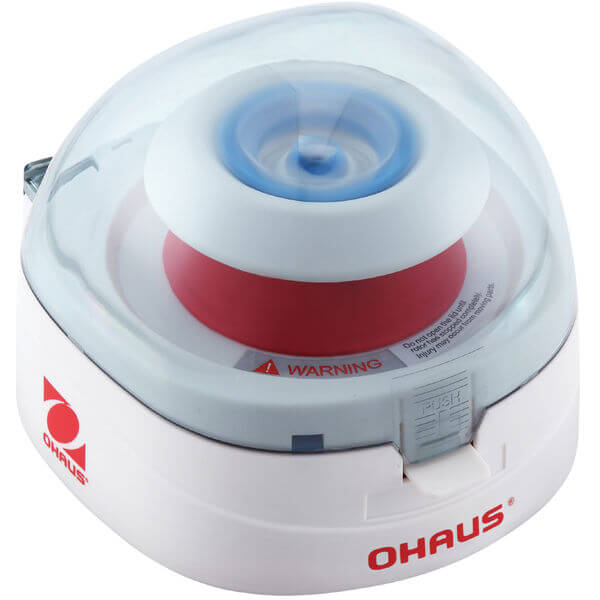- No products in the cart.
Centrifuges are essential workhorses in laboratories, playing a critical role in separating liquids of varying densities, isolating particles, and conducting various analytical and research procedures. To ensure these machines continue to operate at their peak performance and have a long and productive lifespan, proper maintenance is key. In this comprehensive guide, we'll delve into the practical maintenance tips and guidelines that will help you master centrifuge maintenance, allowing you to maximize their longevity and optimize their performance.
Regular Cleaning and Inspection: A Spotless Spin Zone
Cleanliness is more than a virtue; it's a necessity when it comes to centrifuge maintenance.
External Cleaning:
Start with a gentle wipe-down of the exterior using a mild cleaning solution. Removing dust and dirt prevents potential hazards and preserves your centrifuge's appearance.
Rotor Care:
The rotor is the heart of the centrifuge. Remove it, clean it meticulously, and inspect for any cracks or corrosion. A well-maintained rotor ensures efficient spins and accurate results.
Interior Cleaning:
Periodically, delve deeper with a thorough interior cleaning. A damp, lint-free cloth will do wonders for wiping down interior surfaces, safeguarding against residue buildup.
Electrical Components:
Give electrical components some love by using compressed air to remove dust and debris. Adequate ventilation keeps your centrifuge cool and running smoothly.

Lubrication and Calibration: The Precision Play
Lubrication and calibration are the twin pillars of centrifuge maintenance, ensuring precision and smooth operation.
Lubrication:
Follow the manufacturer's guidance on lubrication intervals. Apply the right lubricant to moving parts, reducing friction and allowing your centrifuge to dance effortlessly.
Calibration:
Regular calibration is your compass to accuracy. Follow the manufacturer's specifications to the letter. Precise calibration ensures reliable results, especially in experiments that demand pinpoint accuracy.
Balance and Alignment
Like a maestro leading an orchestra, proper balance and alignment are key to a symphonic spin.
Rotor Balance:
Load the rotor evenly. Distribute tubes or containers with matching weights on opposite sides. Balanced loads prevent undue stress on your centrifuge, ensuring a harmonious rotation.
Vibration Check:
As your centrifuge spins, it should serenade you with minimal vibrations. Unusual tremors are a sign of imbalance. If you sense discord, halt the operation and recalibrate.
Safety First
Maintenance is a choreography of safety. Prioritize protection for both yourself and your centrifuge.
Power Disconnection:
Before you don your maintenance hat, disconnect the power cord. It's a simple step that eliminates the risk of accidental activation.
Personal Protective Equipment (PPE):
Safety gear isn't a costume; it's your shield. Don gloves and safety goggles, especially when handling chemicals or performing maintenance tasks.
Chemical Compatibility:
Your centrifuge has preferences, particularly when it comes to cleaning agents and lubricants. Adhere to the manufacturer's recommendations to prevent chemical clashes.
Documentation and Records: The Choreography of Care
Meticulous record-keeping transforms maintenance into a well-orchestrated routine.
Maintenance Schedule:
Create a schedule that outlines regular maintenance tasks—cleaning, lubrication, calibration, safety checks. Stick to the script to ensure your centrifuge is always ready for its next performance.
Maintenance Log:
Think of it as a journal chronicling your centrifuge's life. Each entry should detail tasks performed, dates, replaced parts, and the technician responsible. This log becomes your reference, ensuring continuity and accountability.
Conclusion
Mastering centrifuge maintenance is not only essential for the longevity and optimal performance of these valuable laboratory tools but also for the safety of laboratory personnel and the accuracy of research outcomes. By following these practical maintenance tips and guidelines, you'll be well-equipped to keep your centrifuge running smoothly and efficiently for years to come. Remember, a well-maintained centrifuge is a reliable partner in scientific discovery and experimentation.
For over 40 years, Lab Pro Inc. has been committed to delivering the highest quality lab equipment such laboratory centrifuges, lab supplies, Excelta hand tools, reagents, distance learning kits, and cleanroom PPE apparel. Renowned by global medical device companies and laboratories, we ensure exceptional quality in every product. Contact us online or call 888-452-2776 to learn more. Discover top-notch lab supplies and elevate your experiments today!












































